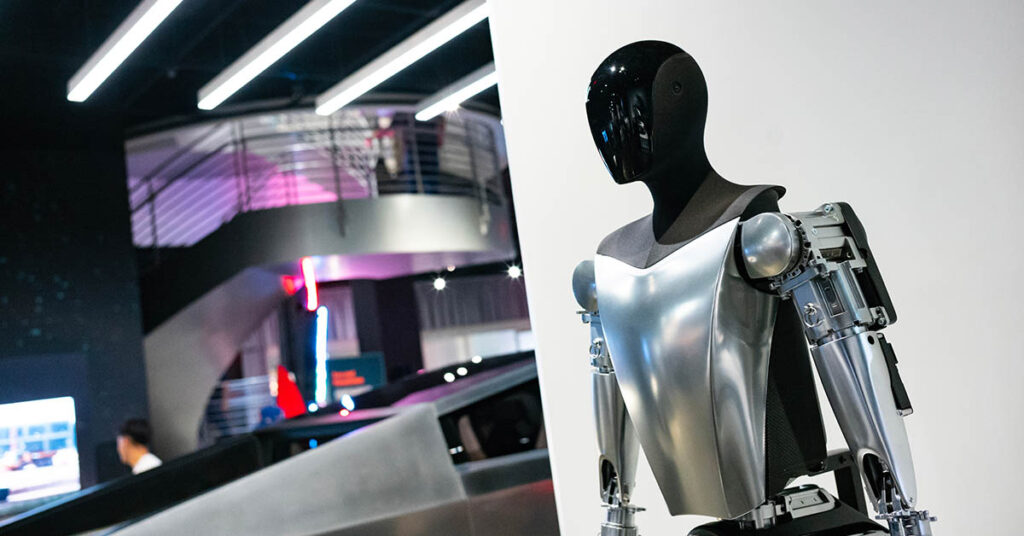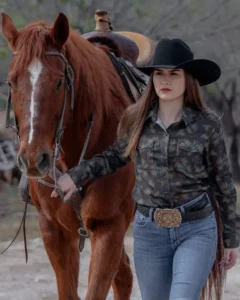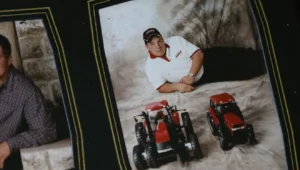Elon Musk, the visionary entrepreneur behind Tesla, SpaceX, and several other groundbreaking ventures, recently announced that Tesla is set to begin production of its highly anticipated humanoid robots as early as next year. This bold move marks a significant milestone in artificial intelligence and robotics, raising expectations for how these machines could revolutionize labor markets, home assistance, and even space exploration.
The Birth of Tesla’s Humanoid Robot: Optimus
Tesla’s humanoid robot, known as Optimus, was first introduced to the public in 2021 at Tesla’s AI Day. The prototype, initially a man in a bodysuit meant to represent the robot’s design, was later followed by actual working models demonstrating real-time movements. The purpose of Optimus is to tackle tasks that are dangerous, repetitive, or undesirable for humans, thereby increasing efficiency in various industries.
According to Musk, Optimus will be powered by Tesla’s advanced AI algorithms and utilize the same neural network technology as Tesla’s autonomous vehicles. With cameras, sensors, and actuators working in harmony, Optimus is expected to perform human-like tasks with precision and adaptability.
Production Timeline and Mass Market Vision
During a recent Tesla event, Musk confidently stated that production of the humanoid robot would begin in 2025, signifying rapid advancements in Tesla’s AI capabilities. He emphasized that the company aims to manufacture Optimus at scale, with the ultimate goal of bringing down costs and making the robot widely accessible to consumers.
One of Musk’s major ambitions is to offer Optimus at an affordable price—potentially under $20,000—allowing businesses and even individual consumers to integrate the robot into daily tasks. Unlike other robotics companies, Tesla envisions mass adoption, similar to its approach with electric vehicles.
Technical Capabilities and Features
Optimus is expected to be around 5 feet 8 inches tall and weigh approximately 125 pounds. The humanoid design closely mimics human anatomy, featuring:
- Advanced AI Navigation: Tesla’s full self-driving (FSD) system will enable Optimus to perceive and interact with its environment dynamically.
- Dexterous Hands: The robot will have fully articulated fingers designed for object manipulation, making it useful in industries such as manufacturing and logistics.
- Human-Like Movement: With Tesla’s robotic actuators and motion control technology, Optimus will walk, bend, and lift objects smoothly.
- AI-Powered Decision-Making: Optimus will be trained to learn from its surroundings, improving its efficiency over time with real-world experience.
Tesla’s primary goal is to create a robot capable of working in factory environments, handling tedious tasks, and even assisting in homes with chores like cooking and cleaning.
Potential Applications of Optimus
The deployment of Tesla’s humanoid robots could revolutionize multiple sectors:
- Manufacturing & Logistics: Optimus could replace human workers in repetitive and hazardous factory jobs, reducing labor costs and workplace injuries.
- Healthcare Assistance: The robot could provide support in caregiving, assisting the elderly or disabled with daily tasks.
- Retail & Customer Service: Businesses may use Optimus as an in-store assistant to provide product information or manage inventory.
- Household Chores: From dishwashing to assembling furniture, Tesla’s robot could ease the burden of household labor.
- Space Exploration: Musk has hinted at using AI-driven robots for future Mars colonization missions, where Optimus could assist astronauts in maintaining habitats and conducting research.
Challenges Tesla Faces
Despite the exciting prospects of Tesla’s humanoid robot, several challenges remain:
- Technical Complexity: Developing a fully functional humanoid robot capable of performing intricate human tasks is a significant engineering challenge.
- AI Safety Concerns: Musk has long been vocal about the dangers of AI. Ensuring that Optimus is safe, secure, and aligned with human values will be a crucial aspect of its development.
- Market Adoption: Businesses and consumers must be willing to integrate robots into daily operations. Overcoming skepticism about AI-driven automation will be essential.
- Regulatory Hurdles: The use of humanoid robots in workplaces and public spaces will likely require new regulations and compliance with labor laws.
The Bigger Picture: Musk’s Vision for AI and Humanity
Musk believes that humanoid robots will eventually become as common as cars, fundamentally altering how humans interact with machines. He envisions a future where robots handle mundane tasks, allowing humans to focus on more creative and meaningful work.
Furthermore, Musk has speculated about a future economy where labor is largely automated, necessitating a universal basic income (UBI) to support people as traditional jobs become obsolete.
If Tesla successfully mass-produces Optimus, it could lead to a dramatic shift in industries ranging from manufacturing to personal assistance. However, whether society is ready for such an evolution remains to be seen.
Final Thoughts: A New Era of Robotics?
Tesla’s announcement about the production of humanoid robots marks a new chapter in AI and robotics. If Optimus meets expectations, it could redefine work, automation, and even daily life in profound ways.
As the world waits for Tesla to bring its humanoid robot to market, the potential impact remains a subject of excitement and debate. Will Optimus truly become the future of labor, or is this another ambitious Musk promise that will take years to materialize? Only time will tell.










